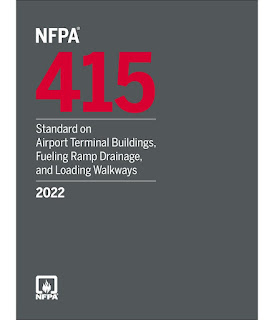"NFPA 1961 Explained: Fire Hose Inspection, Testing, and Performance Guidelines"
The National Fire Protection Association (NFPA) sets the benchmark for fire safety through its comprehensive codes and standards. One such crucial standard is NFPA 1961: Standard on Fire Hose, which provides detailed requirements for the design, construction, performance, testing, and certification of fire hoses. Understanding this standard is essential for fire departments, hose manufacturers, safety inspectors, and anyone involved in firefighting operations or equipment compliance.
Purpose and Scope of NFPA 1961
NFPA 1961 outlines the minimum criteria to ensure that fire hoses are safe, durable, and capable of performing under the intense conditions typically encountered during firefighting operations. The standard applies to fire hoses used for municipal firefighting, forestry, and industrial applications. It does not include hose accessories such as nozzles or couplings, but it does detail how hoses should be tested with these components in mind.
Fire Hose Construction and Materials
The construction of fire hoses under NFPA 1961 must meet stringent performance metrics. Typically, fire hoses are made of synthetic materials with a woven jacket and a rubber or thermoplastic lining. The outer jacket provides strength and abrasion resistance, while the inner lining ensures water-tightness and flexibility. The materials used must withstand extreme temperatures, high water pressure, UV exposure, and chemical contact.
NFPA 1961 requires manufacturers to use high-quality materials and production techniques that reduce the risk of failure during use. The standard includes requirements for burst strength, tensile strength, elongation, flexibility, and resistance to kinking and abrasion. These specifications help ensure the hose remains reliable and functional in life-threatening scenarios.
Design and Performance Testing
Design specifications in NFPA 1961 include requirements for dimensions such as diameter, length, and weight. Each hose must undergo rigorous testing to verify its compliance with pressure ratings and performance capabilities. Key tests include:
-
Burst Pressure Test: Ensures the hose can withstand high-pressure surges without rupturing.
-
Service Pressure Test: Confirms the hose can handle typical operational pressures safely.
-
Kink Resistance Test: Measures the hose’s flexibility and its ability to resist kinking during deployment.
-
Abrasion Resistance Test: Evaluates the durability of the outer jacket in harsh environments.
Hoses must meet or exceed the minimum thresholds in all tests to be considered NFPA 1961 compliant.
Certification and Labeling
Once a fire hose passes all testing requirements, it must be properly labeled to show NFPA 1961 compliance. Labels typically include the manufacturer’s name, date of manufacture, model designation, and the NFPA 1961 reference. Certification ensures traceability and accountability in the event of performance issues.
Conclusion
NFPA 1961 plays a vital role in ensuring the safety and effectiveness of fire hoses, which are critical tools in firefighting and emergency response. By setting rigorous standards for construction, design, and performance, the NFPA helps protect the lives of both firefighters and civilians. Understanding this standard enables stakeholders to make informed decisions when selecting, maintaining, or certifying fire hoses, ultimately contributing to safer firefighting practices.
For inquiries, technical support, or product certification services, please contact us at
Mail: contact@kukubooks.com




Comments
Post a Comment